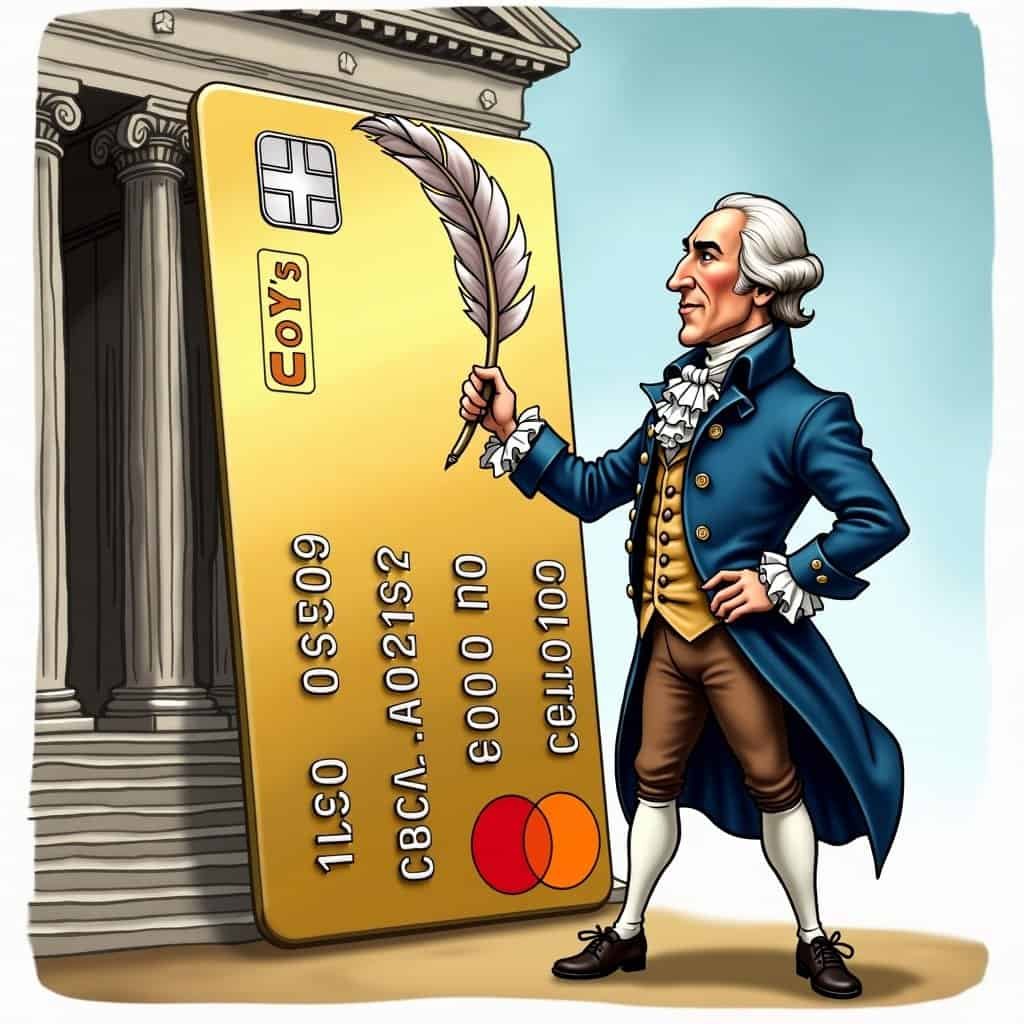Alexander Hamilton. The name brings to mind powdered wigs, quill pens, and a financial savvy that could make even today’s top economists blush. His genius wasn’t just in writing fancy letters; it was in creating a foundation for the United States to grow and thrive economically. For conservatives, Hamilton’s ideas are like gold—proof that a strong nation builds on solid money and hard work, not the passing dream of ever-growing government handouts.
Before we get into the details, let’s set the scene. This isn’t some fluffy daydream about coin collections or Broadway shows. This is about learning from the financial wisdom of the man himself. Hamilton knew that without stable, trustworthy money, and without a government that put economic independence first, freedom, wealth, and national security would always be at risk. Can we all take a moment to appreciate how far ahead the first Treasury Secretary was thinking?
Sound Currency: More Than Just a Slogan
In Hamilton’s America, sound currency wasn’t just a catchphrase on colonial souvenirs. The British had left, but our young country still had debt piling up higher than the taxes some dream of today. Hamilton rolled up his sleeves (or silk stockings—who are we to judge?) and put in place economic policies as tough as the American spirit. He pushed for a national bank, a move that gave the United States control over printing money and, believe it or not, kept inflation in check. Surprising, right?
Hamilton’s Vision and Conservative Ideals
Here’s where Hamilton’s ideas line up perfectly with today’s conservative thinking. His principles were all about being responsible with money, something some politicians nowadays treat as casually as a parking ticket. Hamilton argued that sound currency creates trust in the economy. And trust, dear reader, isn’t built on printing more money than there are pumpkin spice lattes in October. It comes from discipline—balancing budgets, cutting unnecessary spending, and making sure businesses can create wealth. Sound familiar? Modern conservatives have been saying this for years: when you keep the government in check and let the market do its thing, everyone wins.
Hamilton’s Economic Principles vs. Modern Policies
| Hamilton’s Principles | Modern Progressive Policies |
|---|---|
| Fiscal responsibility | Increased government spending |
| Sound currency | Inflationary policies |
| Limited government | Expanded government control |
| Strong private sector | Increased regulation |
Compare that with progressive economic policies that, let’s face it, often look like financial magic tricks: tax the rich, spread the wealth around, add another zero to national debt, rinse, and repeat. If Hamilton were here today, he’d probably look at such ideas with the same raised eyebrow he gave Aaron Burr (spoiler alert: it wasn’t friendly). Hamilton knew the truth—economic success isn’t served by overcooked redistribution plans. Instead, you get there by building a strong system that rewards new ideas, cuts debt, and builds—in the true sense of the word—confidence in money and trade.
Championing American Self-Sufficiency
Let’s not forget that Hamilton also set the stage for what many of us on the right proudly support: American self-reliance. By fixing America’s credit and attracting foreign investment, he made sure that Uncle Sam could stand on his own two feet. On the flip side, today’s progressive policies often seem to pull in the opposite direction, chipping away at independence and leaning more into debt and dependency. Hamilton believed in businesses and government working together long before “public-private partnerships” became a buzzword. He understood that new ideas happen when governments empower businesses, not when they watch over every single deal.
Hamilton’s Legacy: A Blueprint for Success
Now, while some on the left might point fingers and say Hamilton’s policies favored the elite or gave too much power to the money folks, let’s be honest for a moment. The man wasn’t perfect. None of the Founding Fathers were. But his policies aimed for the bigger picture of growth, freedom, and stability. In his view, sound currency was more about making sure every American had a chance at success—not just handing out today’s version of a stimulus check with fancy signatures.
So, as we celebrate (or rediscover) Hamilton’s brilliance, let’s compare history with today. Sound currency didn’t just bring economic strength under Hamilton—it became a recipe for success that conservatives today fight hard to protect. Keeping debt low, encouraging new businesses, and creating growth, rather than punishing it with too many rules and taxes, are paths to prosperity. Alexander Hamilton may have died too soon, but his vision for financial stability remains timeless for those of us smart enough to listen.
Responsible with money, creative, and boldly forward-thinking, Hamilton laid down paths that some keep trying to change. But no amount of creative rewriting can change the facts: sound currency is conservative currency. And if you could ask the Founding Father himself, he’d probably agree—the road to success wasn’t paved with loose spending. It was built on thrift, honesty, and a nod to long-term prosperity. Well done, Mr. Hamilton. Well done.
Table of Contents
- Sound Currency: More Than Just a Slogan
- Hamilton’s Vision and Conservative Ideals
- Championing American Self-Sufficiency
- Hamilton’s Legacy: A Blueprint for Success






